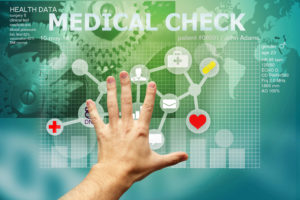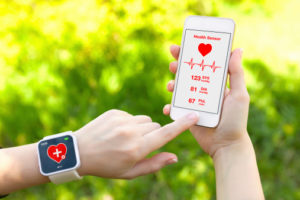 Every year, events like South By Southwest and Mobile World Congress bring us new technology innovations that have the potential to fundamentally reshape a marketers’ playbook. This year was no different, as pharma marketers in attendance in Austin and Barcelona saw a range of technologies from brands like AT&T and Google.
Every year, events like South By Southwest and Mobile World Congress bring us new technology innovations that have the potential to fundamentally reshape a marketers’ playbook. This year was no different, as pharma marketers in attendance in Austin and Barcelona saw a range of technologies from brands like AT&T and Google.
But what technologies from these conferences are likely to have the most impact on pharma marketing in 2019 and beyond? There are four, in particular, that stood out to me.
- 5G
Every telco is promoting the arrival of 5G, which promises to give consumers speedier data connections up to 100 times faster than 4G. (Even the President seems excited about the potential here.) This was on display at MWC and SXSW, with companies like Samsung and Huawei making 5G the centerpiece of their presentations and exhibits.
For pharma marketers, 5G has incredible potential. Digital video marketing is a nascent and growing channel for pharma advertisers. As the smartphone has now become the first screen for consumers, 5G data speeds can deliver higher definition video content more effortlessly, enabling a more consistent and better quality experience. Faster speeds also means marketers will be able to leverage more creative video formats, like AR and VR, without worrying about buffering or load times affecting the end-user. In fact, a study by Verizon Media found that one-third of advertisers believe 5G’s top benefits will be “better consumer experiences” and the opportunity to “use new or additional creative formats.”
- Robots
At this year’s MWC and SXSW, robots was one of the most-discussed topics. This is unsurprising, since — over the past couple of years — they’ve become a focal point across so many industries. There are countless ways they can make a wide range of daily tasks more seamless. And pharma is no exception.
Most important for pharma marketers is how robots can help them interpret relevant consumer data, allowing them to develop stronger and more effective marketing campaigns. A study by Econsultancy and IBM found that 33% of top marketers believe that having the right data collection technologies is the best way to help understand customers. So once marketers have the data they need, they can create the right messaging and figure out the best ways to reach their target audience.
Another way robots can be beneficial for pharma marketers is by boosting inventory. And as demand grows for pharmaceuticals, robots will take on a more prominent role in the space. According to Grand View Research, global pharma robot market growth will reach $430 million by 2025. So if robots can produce pharmaceuticals more quickly, there will ultimately be less downtime in factories. This means lower lead times, happier customers and — most importantly — more marketing opportunity.
- Health-tracking technology

We’ve seen an evolution in the number of health-tracking devices over the past decade or so. This has positioned them as something worth paying close attention to. And if this year’s SXSW and MWC conferences are any indication, they’ve already made the jump to the next level. BCC Research found that health self-monitoring technologies — such as Fitbit and Apple Watch — will reach almost $72 billion by 2022. This growth is huge. But for pharma marketers, why does it matter?
This boom actually opens up a whole world of marketing potential. Most health-tracking devices are connected to apps on personal mobile devices. And as you likely know, where there’s mobile, there’s data. So marketers can actually use any of this data to target consumers on a personal level. From there, they can share articles and offers based on their health and habits. It’s important to make sure marketers aren’t violating any privacy laws — like last year’s newly-implemented GDPR restrictions. In addition, marketers have the opportunity to advertise directly on health-tracking devices. If people are using them all the time, consumers are likely to see any ads that show up on their device. And if they’re relevant to them, there’s a good chance they will interact with them, as well.
- AI and marketing structure
AI is here to stay. And it’s having much more far-reaching consequences than creating driverless cars or worker-free convenience stores. AI is disrupting the way we view creativity, solve problems, and fabricate and test marketing strategies and materials.
The adoption of AI will have a major impact on the organizational structure of marketers, as well as how they go about getting their jobs done. And while AI has been on the radar for a while now, MWC and SXSW really illuminated the need for marketers to become more savvy on the AI front. This includes training teams, adopting solutions, and becoming more comfortable with what an AI-powered marketing industry will look like. When it comes to pharma marketing specifically, the possibilities are endless. AI will continue to influence medical and pharma research — including diagnoses and treatments. Moving forward, it’ll play an increasing, unique role in the way pharma marketers conduct their business.
There are plenty of trends that pharma marketers can take away from these two events. Among the many topics at them, I found 5G, robotics, health-tracking technology, and AI to be most important for pharma. It’ll be fascinating to see how these four areas grow and become embedded into pharma marketing campaigns moving forward.

